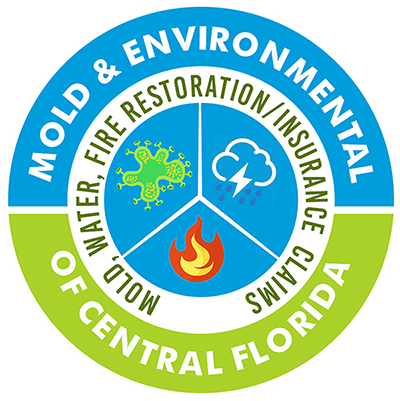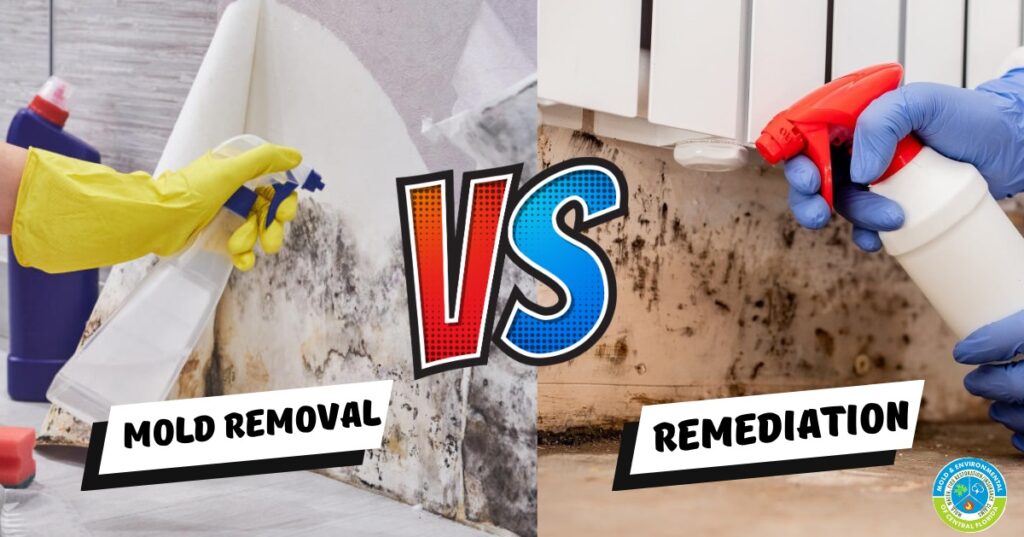The Difference Between Mold Removal and Mold Remediation
Many homeowners facing mold problems want mold specialists to clean and remove mold growth on their property. Their exact words are, “I want you to remove the mold completely so it never comes back .”The slight difference is the difference between mold removal and mold remediation. While it sounds similar, there is a massive difference between the two terms. But before understanding the distinction itself, it is crucial to understand what mold is and why we need to eliminate it in the first place.
Mold on your indoor property
Mold is a fungal organism that propagates naturally in our surroundings. as a natural phenomenon, mold growth is not considered harmful in average concentrations. When exceeded beyond a moderate level, mold can harm the people and property in its vicinity. This fungal being is a microscopic organism initially, but it grows through the germination of spores when it finally becomes visible to the naked eye. Unfortunately, it becomes too late once you can see the mold growing in varied shapes and patterns.
Why does it grow on my property?
Mold grows anywhere when given the perfect humidity, moisture, and darkness conditions. These three factors are critical in controlling mold growth. Unfortunately, Florida has constant rain, sunny weather, and closely packed housing structures. Our workplaces have also shrunk to the level where air quality could be more effectively maintained. Furthermore, the lack of ventilation is another reason mold grows on your property. The worst part of mold growing indoors is that it can only be seen when the situation has gotten out of hand and stays invisible otherwise.
Impacts of mold growth on your residential or commercial property
The health
Mold and mildew have been impacting the health of people in their surroundings. Studies show that Americans spend more than 50% of their time indoors. If your air quality is below acceptable standards, it can cause severe health conditions for you and the people around you. Infants and older people are particularly prone to moldy environments because of their weak immune systems. Furthermore, people with allergies and respiratory and nasal infections are also prone to mold attacks.
Common symptoms of mold impact
Common impacts of mold on your health include:
- Coughing
- Sneezing and wheezing
- Sinusitis
- Bronchitis
- Lethargy and weakness
- Allergies
- Shortness of breath
- Triggering of asthma
- Recurring illness
- Redness of eyes
- And much more
Impact on property
Your interior property value can be primarily impacted by mold growth. Mold growing on your property can damage the host object. Most commonly, molds attack organic compounds like food, wooden furniture, walls, etc. the presence of molds damages the overall outlook of your property and lowers its worth. It’s best to take care of the damages before they exceed a significant value to prevent greater loss.
The three main categories of mold:
Molds can be divided into allergenic, pathogenic, and toxic categories.
Regardless of their category, mold will impact the property and health of the people in its vicinity. Here is a brief description of the three mold types:
1) Allergenic molds: as the name suggests, these molds are the one that causes allergies, congestion, sneezing, rashes, redness of the eyes, and breathing difficulties. These molds are harmful to people with respiratory or nasal health conditions.
2) Pathogenic molds: pathogenic molds are very harmful, causing a direct impact on the human nervous system. Many studies even associate these molds and their implications for causing Parkinson’s Disease and Alzheimer’s.
3) Toxic molds: Stachybotrys is one of the notorious toxic molds that can tamper with your immune system when exposed for longer.
So, is average mold growth acceptable on your property?
No! These molds are potentially harmful to you, your loved ones, your coworkers, and even your property. Instead of dealing with the mold on your own, ask a certified and licensed mold inspector to provide you with tailor-fit solutions for your property.
The purpose of professionals is not to get rid of molds for the time being but to ensure that the level of molds is natural and that there is no harm associated with the mold anymore. This goal is more attainable and sustainable and can be understood from the explanation below.
Mold Removal Vs. Mold Remediation
It is coming to the main topic of discussion about mold removal and remediation. While mold removal and remediation are often synonymous, the two methods differ. The primary difference lies in the end-term goals of the two purposes. Mold remediation focuses on removing any material or object impacted by the mold and causing harm. At the same time, mold removal is removing the mold from the home where it exists. It means the cleaning of mold from the host surface.
Mold usually grows on non-porous or semi-porous materials. Mold removal is an act of removing mold from this surface only. At the same time, mold remediation can be looked upon as evaluating which objects have mold spores on them and can cause mold growth again.
Is sanitization similar to mold remediation?
Sanitization is the process of lowering airborne contaminants and surface mold. It usually targets mold that is less than 10 square feet. The main goal behind sanitation is reducing the spore count in the air. It is different from mold remediation because sanitization focuses on lowering the spores, while remediation acts on the later stage to prevent mold growth further. The two work together, but they are different procedures.
So, in simple terms, we can conclude that:
- Mold removal is the process of removing mold from the surface. However, this process does not include eliminating material exposed to mold spores. It must be realized that mold removal is a simple process suitable for the short-term, but the mold can return too.
- Sanitization is the treatment for air purification where the problem is less than 10 square feet. Furthermore, it also does not act for water-type mold. The main objective is to lower the spore count, prevent mold colonization, and improve air quality.
- Mold remediation is removing the mold and removing the material that got in contact with the mold. This process is considered more sustainable because it eliminates mold damage in the long run.
Which method is the best?
Professionals believe mold remediation is the best way to find a long-lived sustainable solution for your health and property.
Are you looking for professional help?
Call moldandenvironmental.com today for professional mold remediation services, including mold inspection, sampling, testing, removal, and remediation. We ensure complete remediation that will improve your air quality and protect you from the harmful possibilities of mold growth. Call us now at (754)-703- 8317 and book your appointment.

